A foam roller is a cylindrical-shaped exercise tool made of foam used for self-massage. It is used to put pressure on the muscles by rolling or remaining still on different parts of the body.
Foam roller is a form of self-myofascial release that involves applying pressure to soft tissue to reduce pain, increase flexibility, and speed up healing. The science behind foam rolling is based on the idea that myofascial restrictions and trigger points in muscles can lead to pain and decreased range of motion.
Foam rolling can help release muscle tension and reduce stress levels, making it a great way to relax after a workout or a long day.
In this guide, you’ll learn about the benefits of foam rollers, how to use them effectively, proper foam rolling techniques, and post-workout foam roller exercises.
How to use a foam roller?
When using a foam roller, the user places the target muscle on top of the roller and applies their body weight to it by rolling back and forth. The basic technique involves lying on a foam roller and rolling back and forth on the targeted muscle group.
The pressure of the roller on the muscles helps apply pressure and stretch the muscle fibres, releasing tension and increasing flexibility.
Foam rollers come in different densities, with firmer rollers providing deeper pressure, while softer rollers provide gentle pressure. This allows users to choose a foam roller that matches their desired level of pressure.
Foam rolling techniques
There are many foam rolling techniques that can help target specific muscle groups and increase the effectiveness of your exercise. These technologies include:
- Rolling technique (basic technique) – Roll back and forth on the targeted muscle group to apply pressure and release tension.
- Static pressure – Place the foam roller on a specific area of the muscle and press on it for 30-60 seconds.
- Trigger point technique – Hold the foam roller on a specific area of the muscle and roll it back and forth over that area.
While foam roller exercises can be used for self-massage, they can also be done as part of a warm-up or cool-down routine.
Benefits of foam roller exercises include:
1. Improve flexibility and range of motion:
One of the primary benefits of foam rolling is improved flexibility and range of motion. Foam rolling helps release tight muscles and fascia, allowing the muscles to move more freely. This increased flexibility can improve athletic performance and reduce the risk of injury.
2. Injury prevention:
Foam rolling can also help prevent injuries by reducing muscle tension and improving flexibility. Tight muscles can put increased stress on tendons and ligaments, leading to an increased risk of injury. By using a foam roller to release muscle tension, you can reduce the risk of injuries such as strains and sprains.
3. Muscle recovery:
Another benefit of foam rolling is improved muscle recovery. After exercise, muscles can become sore and tired due to a buildup of lactic acid and other waste products. Post-workout foam rolling helps increase blood lactate secretion, speed up tissue healing, and reduce muscle pain by increasing blood flow to the affected area.
In short, foam rolling is a highly effective technique for improving flexibility, preventing injuries, improving circulation, and promoting muscle recovery. Incorporating foam rolling into your exercise routine can help you achieve your fitness goals and maintain good overall health.
When to use a foam roller
Foam rolling can be done at any time of the day, but it is recommended to do it after exercise when the muscles are warm and more receptive to stretching. Foam rolling can also be done before exercise to prepare muscles for exercise and reduce the risk of injury.
Who can benefit from foam rolling?
Foam rolling is especially beneficial for athletes and active individuals who engage in repetitive movements, have tight or sore muscles, or want to improve their mobility and flexibility. Anyone can benefit from foam rolling, regardless of their fitness level or age.
***
Foam roller exercises after exercise
Incorporating foam rolling into your regular exercise routine can help improve posture, reduce pain and improve athletic performance.
It is important to breathe deeply and relax while foam rolling, and to stop if you feel any pain or discomfort.
It is also important to remember that foam rolling should be done with proper technique and only to the point of moderate discomfort, as excessive pressure can cause further damage to the muscles.
1. For the upper back
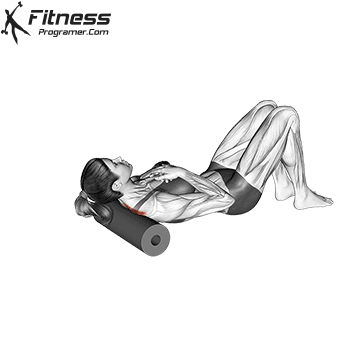
very: Relieve tension in the upper back and shoulders.
steps:
- Lie on your back with the foam roller under your upper back.
- Clasp your hands together over your chest.
- Roll back and forth across your upper back, focusing on tight areas.
- Repeat for 30-60 seconds.
2. For aids
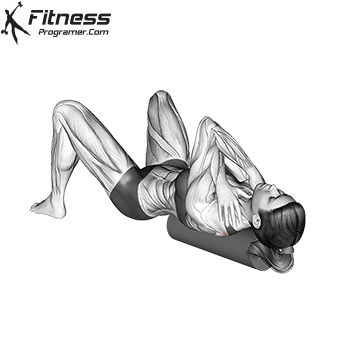
very: Relieve tension in the muscles between the shoulder blades and improve posture.
steps:
- Lie on your back with the foam roller perpendicular to your spine, just below your shoulder blades.
- Cross your arms over your chest.
- Use your feet to roll from side to side, moving the roller up toward your shoulders.
- Repeat for 30-60 seconds.
3. For the chest
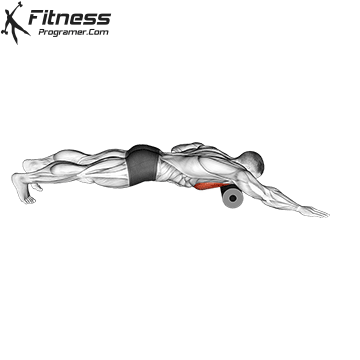
very: To relieve tension in the chest muscles, improve flexibility and provide better posture.
steps:
- Place the foam roller horizontally on the floor.
- Lie face up with the roller under your chest.
- Extend your arms in a “Y” position.
- Roll from side to side or back and forth, pausing for 20-30 seconds on sensitive areas.
4. For the middle of the back
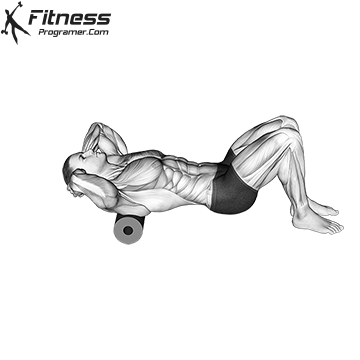
very: Relieve tension in the middle back.
steps:
- Lie on your back with the roller in the middle of your back.
- Bend your knees and place your feet flat on the floor.
- Support your neck with your hands and lift your hips.
- Roll up and down along the middle of the back, pausing on the tender spots for a deep breath.
- Repeat for 30-60 seconds.
5. lats
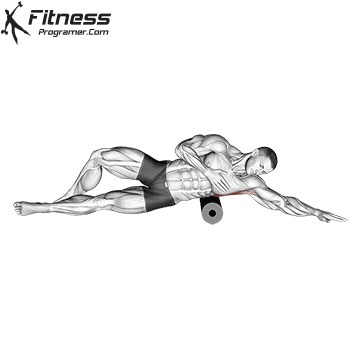
very: Getting rid of tension in the large back muscles responsible for shoulder movement.
steps:
- Lie on your side with the roller under your armpit.
- Roll from just below your armpits to your lower back.
- Pause on sensitive areas for 15-30 seconds.
- Repeat for several passes on both sides.
6. For the thigh muscles
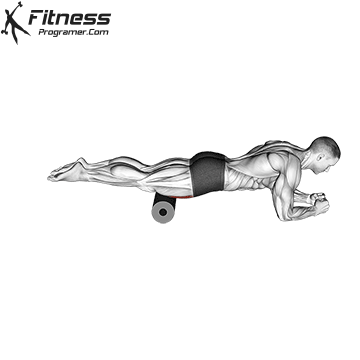
very: Increase blood flow and flexibility in the thigh muscles.
steps:
- Lie face up with the foam roller under your thighs.
- Use your arms to support your upper body.
- Roll up and down from just above the knee to just below the hip.
- Pause on tight areas and hold for 30-60 seconds.
7. For the IT band
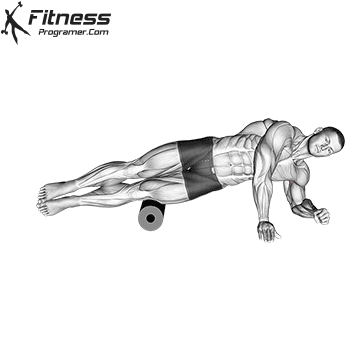
very: Reduce tightness and relieve pain in the outer thigh.
steps:
- Lie on your side with the foam roller under your hip.
- Place your top foot on the floor for support.
- Roll along the outer thigh from the hip to just above the knee.
- Focus on tight areas for 20-30 seconds and repeat on the other side.
Note: Rolling IT tape can be uncomfortable; Start with light pressure and gradually increase.
8. For hamstrings
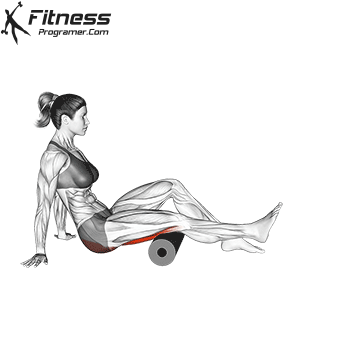
very: Release tension in the back of the thighs.
steps:
- Sit on the floor with your legs straight and the foam roller under your thighs.
- Use your hands to lift your hips off the floor.
- Roll back and forth over your hamstrings for 30-60 seconds, focusing on tight areas.
9. For calves
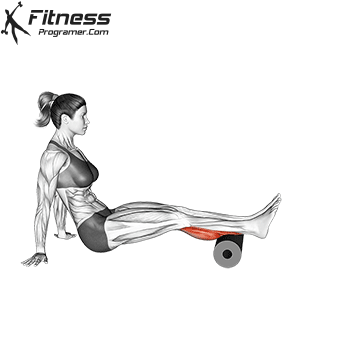
very: Relieve tension and improve flexibility in the lower legs.
steps:
- Sit on the floor with your legs extended and place the foam roller under your legs.
- Lift your hips off the ground using your hands.
- Roll back and forth on your legs for 30-60 seconds, pausing on tight areas.
10. For the buttocks

very: Release tension in the gluteal muscles.
steps:
- Sit on the foam roller with one leg crossed over the other.
- Lift your hips and roll back and forth over your butt.
- Focus on tight areas for 30-60 seconds, then switch sides.
Common mistakes to avoid
Some common mistakes to avoid when foam rolling include:
- Using inappropriate wording Rolling over too quickly or using improper technique can reduce the effectiveness of the exercise and increase the risk of injury.
- Rolls over the lower back – This exercise is not recommended for people with lumbar spine injury or instability. Rolling over on your lower back can put undue pressure on the spine and increase the risk of injury.
- Rolling over the affected areas Rolling on affected areas can aggravate the injury and delay the healing process.
- Using the wrong density or texture of the foam roller – Using a foam roller that is too soft or too hard can make the exercise less effective or cause unnecessary pain. It is important to choose the right density and texture of a foam roller to meet your specific needs.
Final thoughts and advice
Foam rolling can be intimidating for beginners, but it’s important to remember that it’s a process that takes time and practice. It’s normal to feel some discomfort while foam rolling, but it should never be painful. If you feel severe pain, you should stop and seek advice from a healthcare professional. Additionally, it is important to choose the right foam roller for your needs and practice proper technique and form during foam rolling exercises.
In conclusion, foam rolling is a valuable tool for maintaining overall muscle health and flexibility. By following the tips and techniques outlined in this beginner’s guide, you can incorporate foam rolling into your daily routine and experience the many benefits it offers.
sources:
- Does foam roller type affect recovery rate, thermal response and DOMS prevention? (Go to search)
- Foam rolling to treat delayed onset muscle soreness and restore dynamic performance measures. (Go to search)
- A meta-analysis of the effects of foam rolling on performance and recovery. (Go to search)
